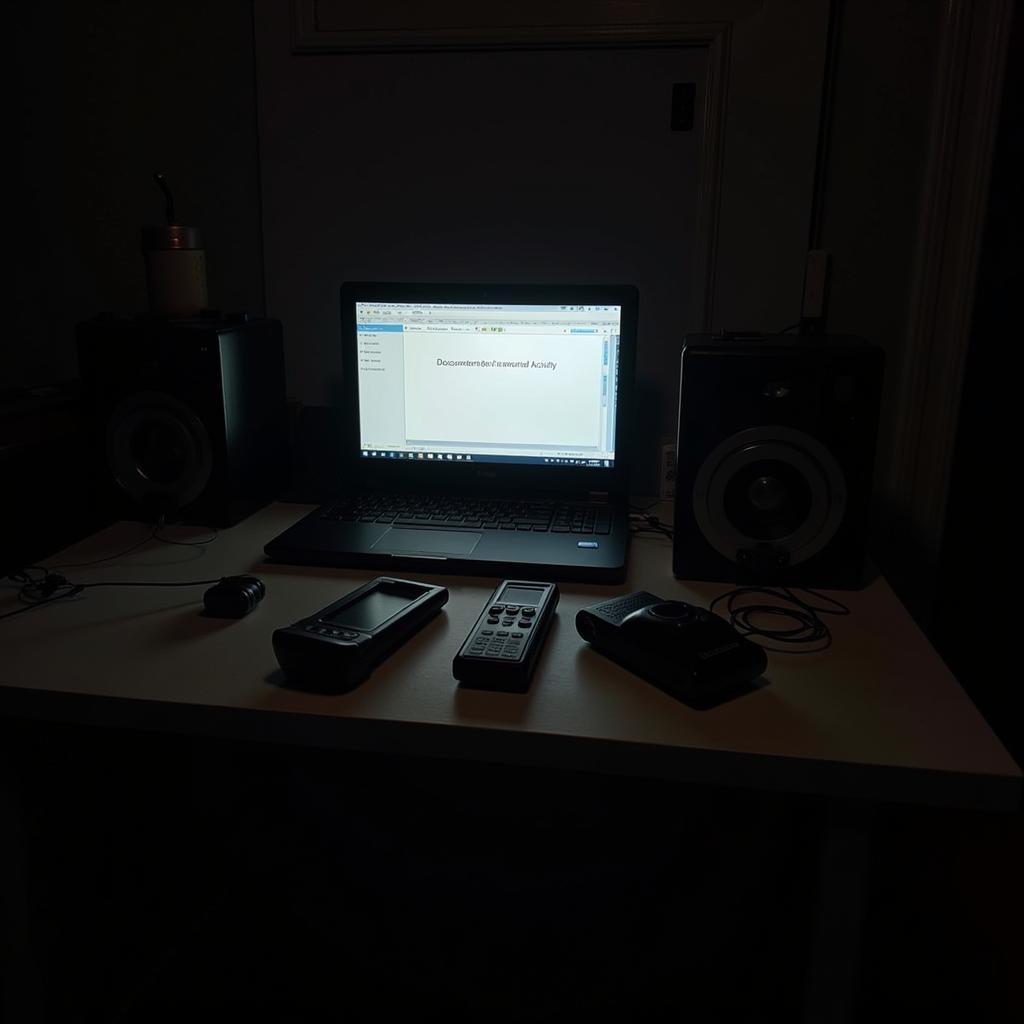The world of Paranormal Research is shrouded in mystery, fueled by anecdotal accounts and personal experiences. But to truly understand the unknown, we must turn to the power of research. Within this realm, two distinct approaches emerge: analytical and descriptive research. These methodologies, though different in their approach, are essential tools for investigators seeking to shed light on the unexplained.
Delving into the Unknown: Descriptive Research
Imagine a haunted house, shrouded in local legends and whispers of spectral tenants. Descriptive research, in its purest form, seeks to paint a detailed picture of this chilling phenomenon. It aims to answer the “what,” “where,” and “when” of the paranormal.
 Descriptive Research in Paranormal Investigation
Descriptive Research in Paranormal Investigation
Think of a paranormal investigator meticulously documenting every shadow, every unexplained noise, every fluctuation in the electromagnetic field within that haunted house. They are not testing hypotheses but rather creating a comprehensive record of the phenomena as they occur. This detailed account, rich with qualitative data, forms the foundation for further exploration.
Key Characteristics of Descriptive Research:
- Observational: Researchers act as keen observers, documenting their findings without manipulating variables.
- Qualitative Focus: Emphasizes detailed descriptions, personal experiences, and narratives over numerical data.
- Foundation for Further Study: Provides the groundwork for formulating hypotheses and conducting more in-depth analytical research.
Seeking Explanations: Analytical Research
While descriptive research paints the picture, analytical research seeks to understand the artistry behind the brushstrokes. It delves into the “why” and “how” of the paranormal, aiming to uncover the mechanisms and relationships that drive these enigmatic occurrences.
Let’s return to our haunted house. An analytical approach might involve comparing the environmental conditions during various paranormal events, analyzing historical data for patterns, or even exploring psychological factors that might contribute to perceived hauntings.
 Analytical Research Methods in Paranormal Studies
Analytical Research Methods in Paranormal Studies
This type of research often utilizes statistical analysis and hypothesis testing to identify potential causes, correlations, and explanations for paranormal phenomena. It’s about moving beyond observation and venturing into the realm of understanding.
Key Characteristics of Analytical Research:
- Hypothesis-Driven: Researchers formulate specific hypotheses and test them through data collection and analysis.
- Quantitative Focus: Emphasizes measurable data, statistical analysis, and objective interpretation.
- Explanatory Power: Seeks to explain relationships, identify causes, and generate conclusions based on evidence.
The Interplay of Two Worlds
It’s crucial to understand that analytical and descriptive research are not mutually exclusive. In fact, they often work in tandem. Descriptive research can provide the initial observations that spark the formulation of hypotheses for analytical research. Conversely, analytical findings can guide further descriptive studies, leading to a more nuanced understanding of the phenomena in question.
Consider descriptive research vs analytical research, which often relies on meticulously compiled codebooks to categorize and analyze data. A what is a codebook in research is a vital tool for organizing qualitative data, making it suitable for quantitative analysis in analytical research.
Conclusion
The world of the paranormal is vast and complex, demanding rigorous and multifaceted approaches to its exploration. By embracing both analytical and descriptive research, we equip ourselves with the tools necessary to navigate the unknown. It is through the synthesis of observation, analysis, and interpretation that we can hope to bring light to the shadows and uncover the truth behind the unexplained.